Tepsijaš is a classic Bosnian homemade bread inspired by old-fashioned bakery loaves baked in a pan (tepsija). With its golden crust and irresistible softness, it's a flavorful staple that pairs perfectly with any meal. Shall we?
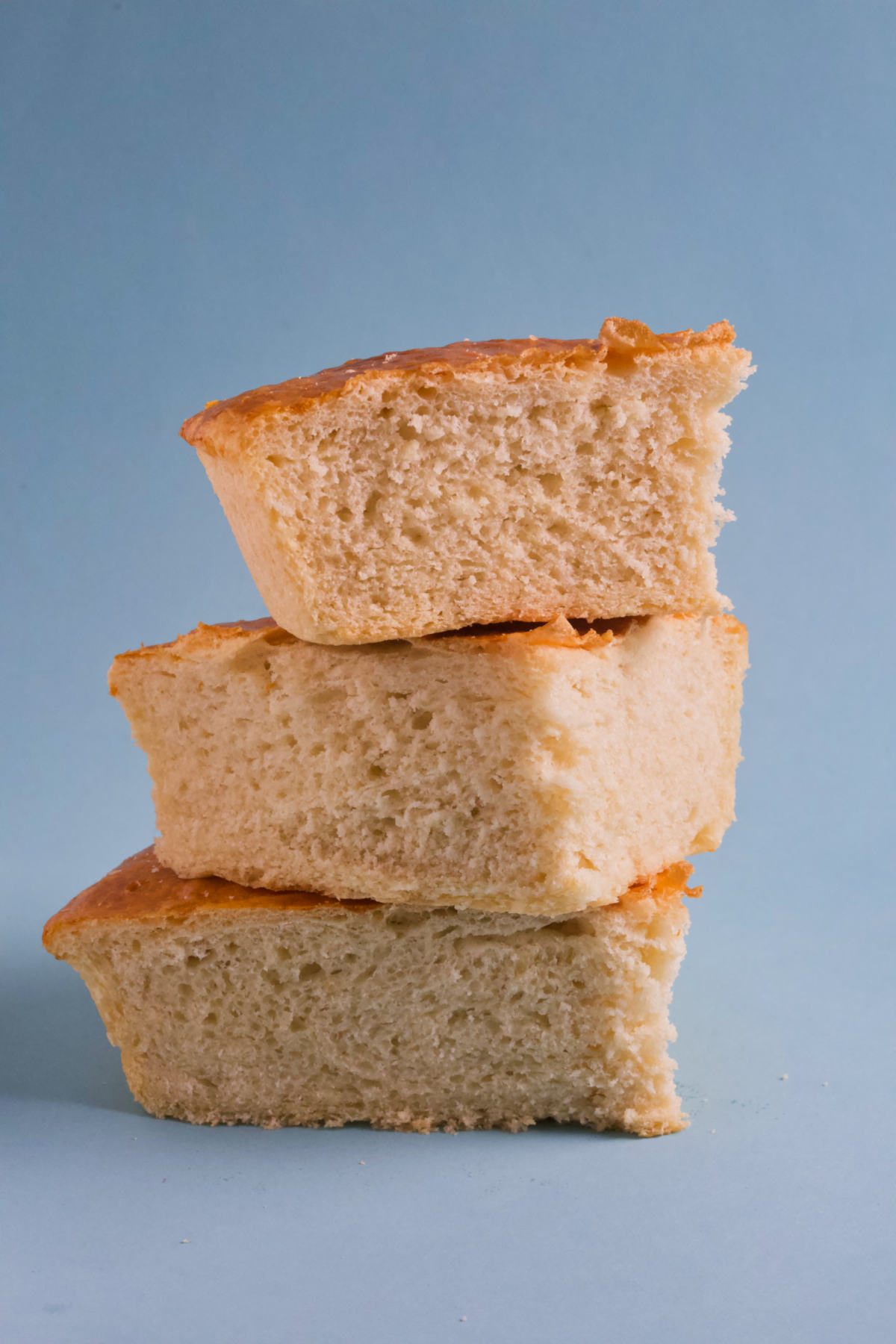
Jump to:
Background
We've made a few baked goods before, like the traditional pogacha, and uštipci. However, today's homemade bread is the go-to loaf for families across the region.
Tepsijaš, loosely translated as 'pan bread,' is a Bosnian staple served with almost every meal. You'll recognize it by its round shape, usually a result of the pan it's baked in, though that's not always the case.
Traditionally, tepsijaš was baked in wood-fired ovens, in bakeries and homes alike.
Now, with bakeries on almost every corner, most people don't make bread at home. But when they do, they make tepsijaš using a version of today's recipe.
Why This Recipe Works
- Simple Ingredients. No fancy stuff are needed for tepsijaš! Just pantry staples you have (and can actually pronounce!): flour, water, yeast, salt, sugar, egg yolk.
- Beginning-Friendly, Expert-Approved. Whether it’s your first loaf or your hundredth, tepsijaš turns out great every time. Best of all? Amazing taste!
- Soft and Wholesome. Unlike the rock-hard crusts you can chip a tooth on, tepsijaš is the kind of bread you can pinch, and it will come back up right away.
Ingredients
Follow these steps to get the most perfect tepsijaš (Bosnian homemade bread ever)!
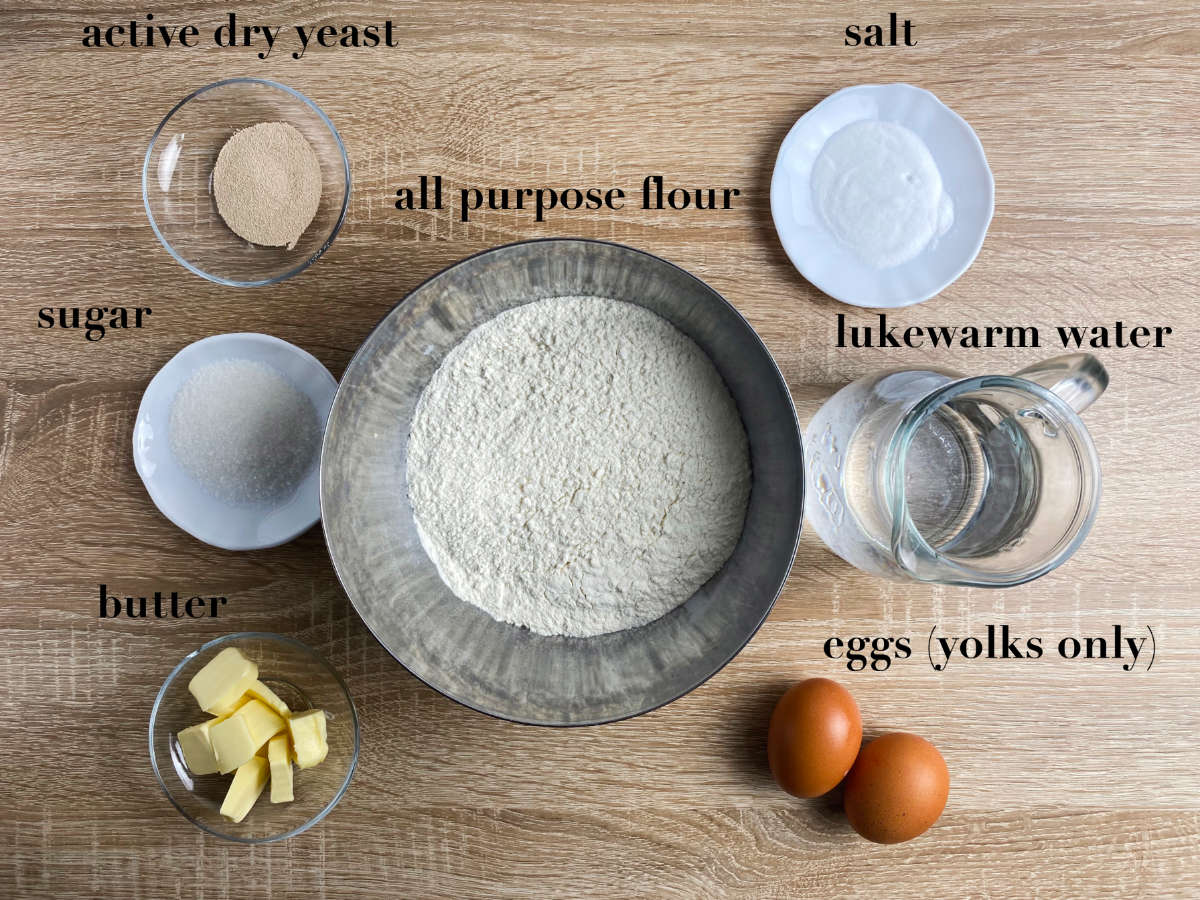
- Yeast. Active dry yeast. Avoid: instant yeast as it tends to produce hard dough that doesn't rise as well.
- Sugar. Any type works.
- Flour. All-purpose white flour. Substitute one-third with integral or wheat flour.
- Salt. Any type.
- Water. Tap or bottled, but lukewarm. Avoid mineral or soda water.
- Egg yolk. Or two.
- (Optional) Butter. Real butter. Substitute with oil or ghee. Avoid margarine.
Instructions
Here are simple directions for Bosnian homemade pan bread, tepsijaš.
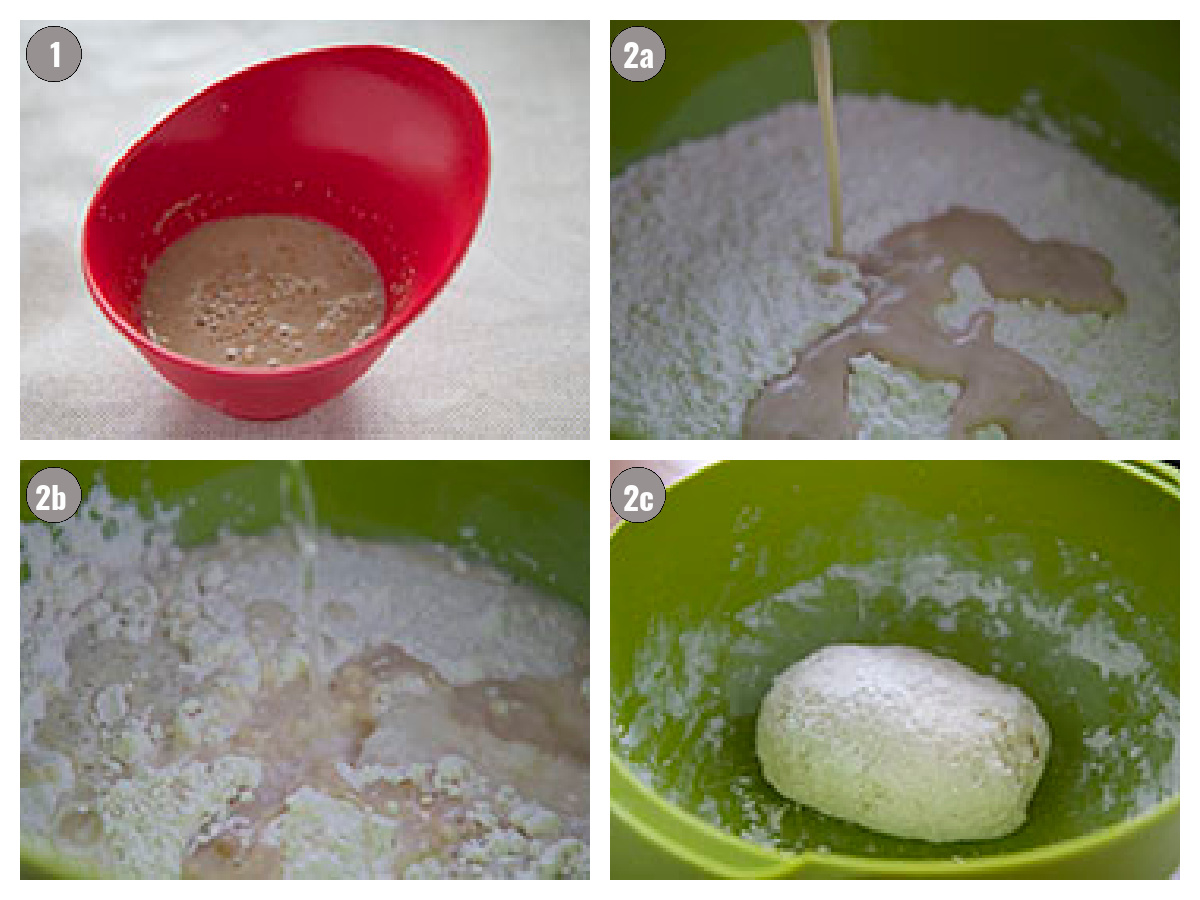
Step 1. Combine yeast and sugar with a few tablespoons of warm, and let it activate (10-15 minutes or until the mixture bubbles up).
Step 2. In a large bowl, combine flour, yeast mixture, salt, and (if using) butter. Start adding water and knead the ingredients together. Knead for a few minutes until you have a cohesive, elastic dough that's slightly sticky.
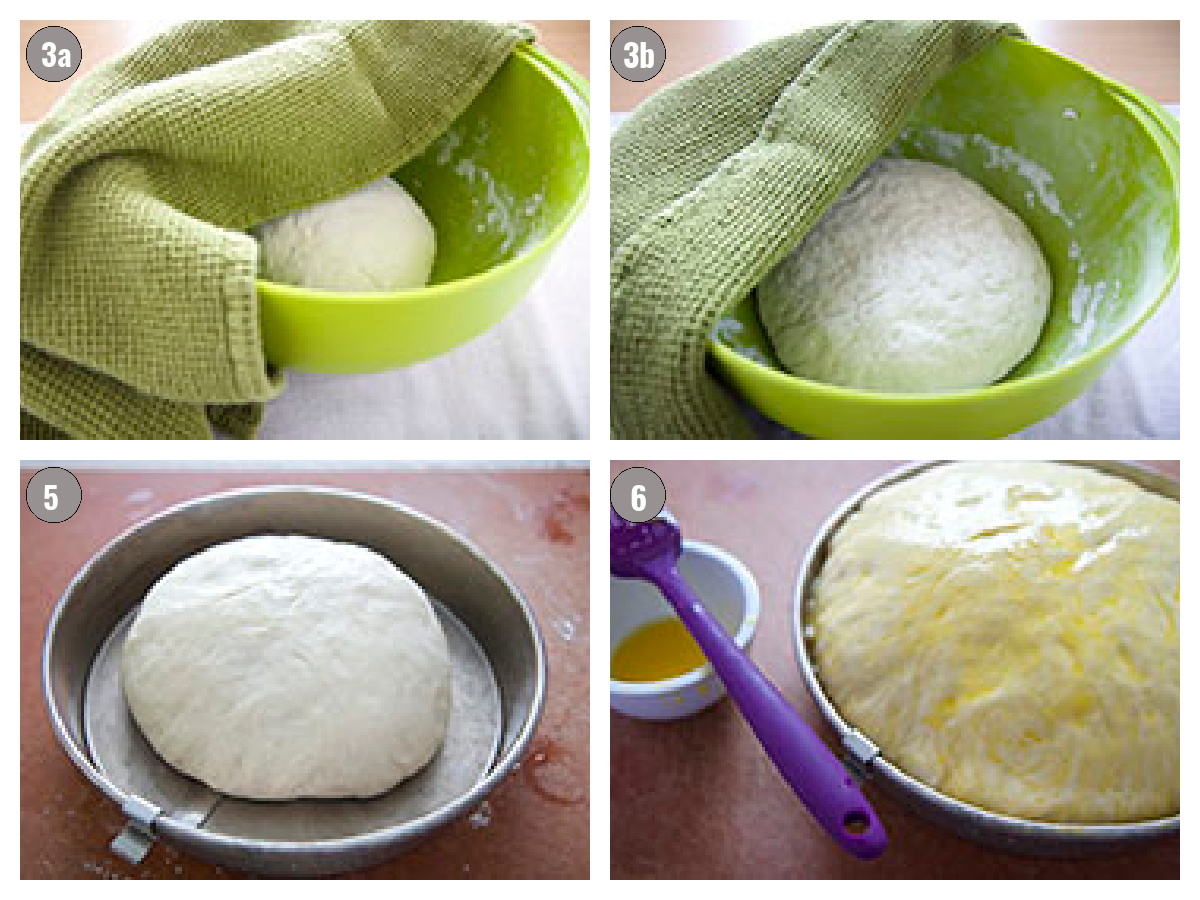
Step 3. Cover the bowl with a kitchen towel. Let the dough rise in a warm spot for 1 to 2 hours, or until it doubles in size.
Step 4. (Not pictured) Punch the dough, then knead it for an additional 4-5 minutes, shaping it into a ball again. You can do this directly in the bowl, or transfer to a working space. (Dust lightly with flour to avoid sticking.)
Step 5. Transfer the dough ball to an oiled pan. Let it rise again for about 45-60 minutes. At the very end heat oven to 475°F (245°C).
Step 6. Brush the bread with the egg yolk on all sides.
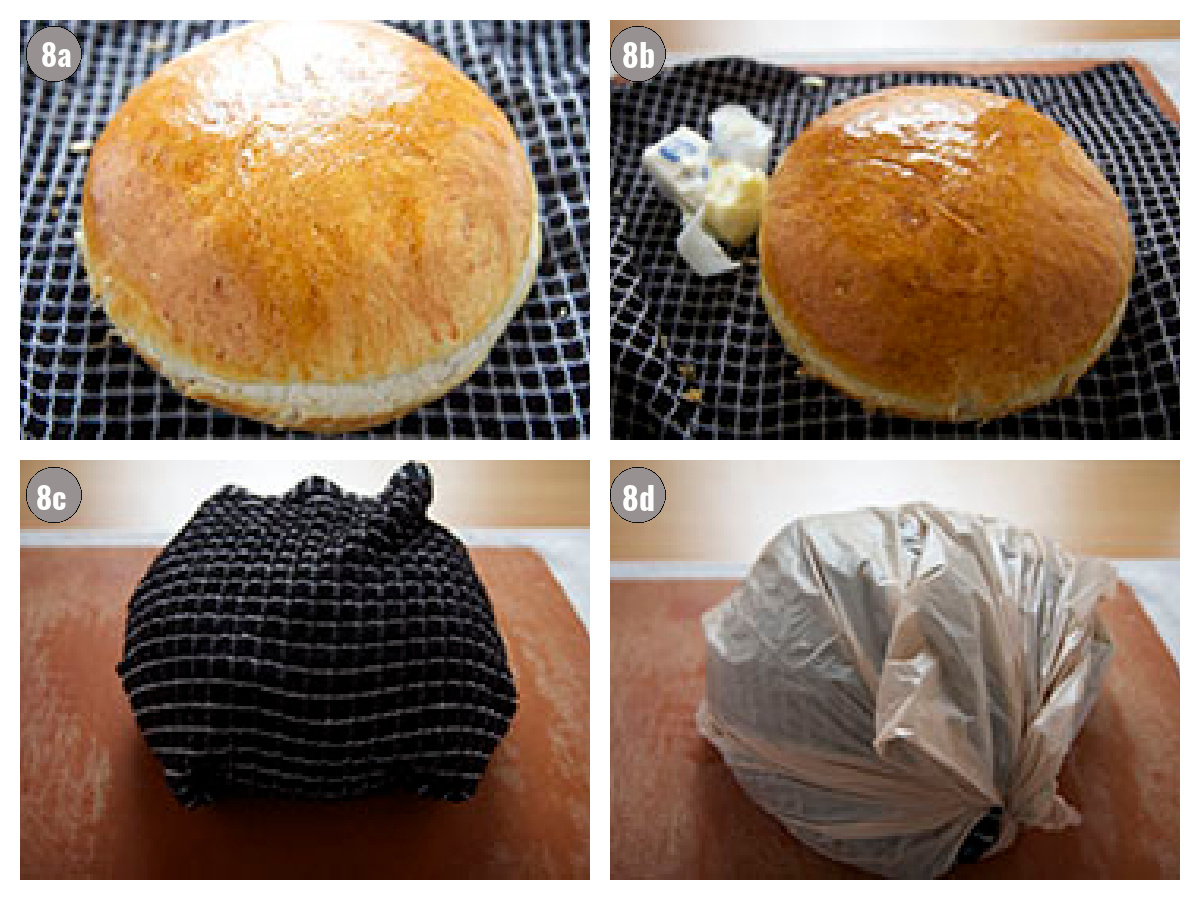
Step 7. (Not pictured) Lower temperature to 400°F (200 °C) and place the pan inside. Bake tepsijaš for 35-45 minutes. Lower the temperature or cover with foil if needed. Turn the pan 180° once during the baking.
Step 8. Soak a clean kitchen towel in cold water, and wring it out well. ((Optional) Smear the butter generously on all the bread's sides.)Transfer hot bread onto the towel, wrap it up, and place it in a plastic bag. Leave for 20 minutes, then serve.
Variations
Here are a few ideas to take your tepsijaš to the next level!
- Whole wheat. Swap half of the all-purpose white flour with whole wheat. You'll get a denser loaf. Bonus? Add a handful of nuts and seeds.
- Cheese Lover’s Tepsijaš. Throw small cubes of hard cheese into the dough for unexpected bites of melty flavor.
- Mediterranean-Inspired. Mix in finely chopped (green or black) olives, or use olive oil instead of butter.
Handling
Here's how to serve and store your Bosnian homemade pan bread, tepsijaš:
Serving. After it's cooled down in a towel, take out out. Serve warm or at room temperature with anything and everything (think stews, spreads, meza, jam, etc.).
Slicing. Cut tepsijaš using a serrated knife.
Storing. Wrap the bread in a clean, dry kitchen towel, and keep it in a bag, breadbox, microwave, or in the oven for up to 2 days. Avoid refrigerating as it dries it out.
Freezing. We're not fans of freezing homemade bread. However, wrapped in a plastic wrap it should last for 1 month in the freezer. Thaw at room temp, and then warm it up in the oven.
Expert Tips
- Slow Down. Trying to hurry up the resting time results in gummy bread.
- Use Fresh Flour. When making tepsijaš (or burek), open a fresh bag of flour. There is something about fresh flour that makes it infinitely better, and easier to work with.
- Sift Before Kneading. For a dough that's lighter, airier, and easier to manage, sift the flour beforehand. This extra minute of work often makes a lot of difference in taste.
Recipe FAQs
There is no secret to making homemade bread! Anyone, and we mean anyone with a little courage, can make bread from scratch!
It's all about combining the four main ingredients (water, flour, yeast, and salt), and (optionally) a few others, and then kneading them together.
The hardest part, if you can call it that, is waiting for the bread to rise, twice.
For the most part, yes it is!
Bread isn't a health food to start with. More and more we're learning about carbs and their connection to diabetes. Still, it's infinitely better to make food at home using the ingredients you're familiar with.
Commercially produced bread has many additives. These are the substances that help alter the taste, and preserve food longer. Unfortunately, some additives are found to be cancerogenic.
Yes, but don't!
Instant yeast simply doesn't perform as well as active dry yeast. The dough often comes out unmanageable.
If you've used too much flour, and haven't kneaded enough, your bread may turn dense. Use enough flour to keep the dough from being sticky, knead it vigorously, and you should be fine.
(Unless you're using a no-knead recipe for homemade bread, of course.)
Wrap bread in a clean kitchen towel, and place in a bread box, or a bag for up to 2 days. (You can even keep it wrapped in the microwave.)
Although you're welcome to freeze it, we find it's always better to make fresh bread. Homemade thawed bread loses some of its texture.
Too much flour can make the bread crumbly.
Sometimes when the dough is sticky, people try to fix it by adding too much flour. Instead, try kneading through the stickiness (wet your hands with water).
Thoughts?
If you make today's Bosnian homemade pan bread called tepsijaš and like it, please consider leaving a ⭐️⭐️⭐️⭐️⭐️ (5-star) rating. This will help others find the recipe more easily!
You can also leave a comment, I read EVERY one! Finally, if IG is more your thing, consider tagging us @balkanlunchbox.
Prijatno, Dobar Tek, and Bon Appetit!
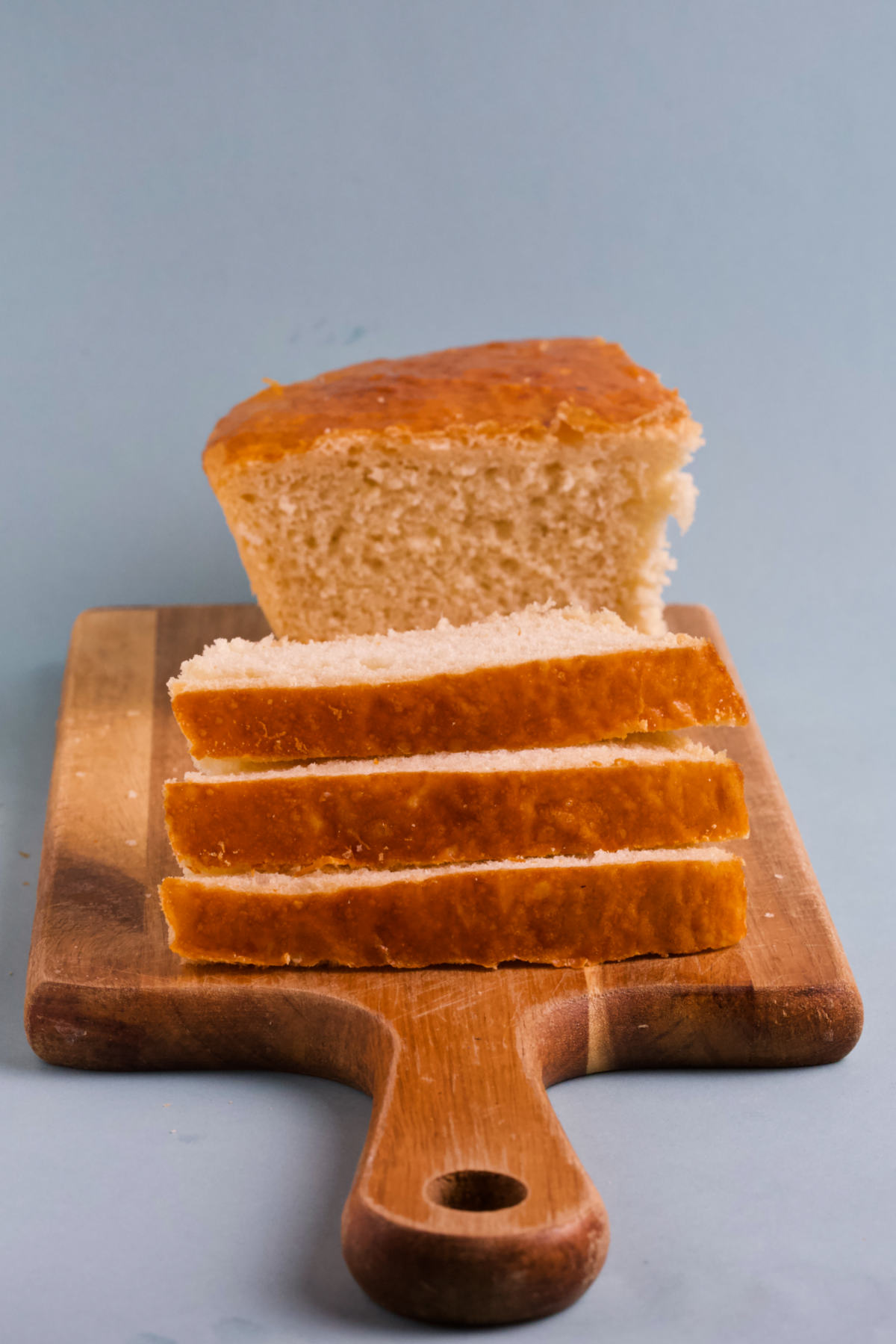
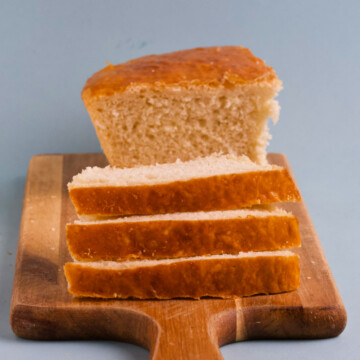
Tepsijaš - Bosnian Homemade Pan Bread
Equipment
- 1 preferably round, 10-12 inch (22-25cm) pan
Ingredients
- 2 tablespoons active dry yeast
- 2 tablespoons sugar
- 4 cups all-purpose white flour, plus a little more you can exchange ⅓ with whole wheat
- 2 teaspoons salt
- 1.3 cups lukewarm water (approximately) volume may vary
- 1-2 egg yolks
- (Optional) 2-3 tablespoons (30-45 g) butter, divided
Instructions
- Activate Yeast. Combine yeast and sugar with a few tablespoons of warm, and let it activate (10-15 minutes or until the mixture bubbles up).
- Knead. In a large bowl, combine flour, yeast mixture, salt, and (if using) 1 tablespoon of butter. Start adding water and knead the ingredients together. Knead for a few minutes until you have a cohesive, elastic dough that's slightly sticky.
- Rest 1st Time. Cover the bowl with a kitchen towel. Let the dough rise in a warm spot for 1 to 2 hours, or until it doubles in size.
- Knead Again. Punch the dough, then knead it for an additional few minutes, shaping it into a ball again. You can do this directly in the bowl, or transfer to a working space. (Dust lightly with flour to avoid sticking.)
- Rest 2nd Time. Transfer the dough ball to an oiled pan. Let it rise again for about 45-60 minutes. At the very end heat oven to 475°F (245°C).
- Brush. Brush the bread with the egg yolk on all sides.
- Bake. Lower temperature to 400°F (200 °C) and place the pan inside. Bake for 35-45 minutes. Lower the temperature or cover with foil if needed. Turn the pan 180° once during the baking.
- Rest 3rd Time. Soak a clean kitchen towel in cold water, and wring it out well. ((Optional) Smear the butter generously on all the bread's sides.)Transfer hot bread onto the towel, wrap it up, and place it in a plastic bag. Leave for 20 minutes, then serve
- Serve warm or at room temperature with anything and everything (think stews, spreads, meza, jam, etc.).Slice tepsijaš using a serrated knife.Store by wrapping the bread in a clean, dry kitchen towel, and keep it in a bag, breadbox, microwave, or in the oven for up to 2 days. Avoid refrigerating as it dries it out.We're not fans of freezing homemade bread! However, wrapped in a plastic wrap it should last for 1 month in the freezer. Thaw at room temp, and then warm it up in the oven.
Video
Notes
- Serving and Nutritional Information

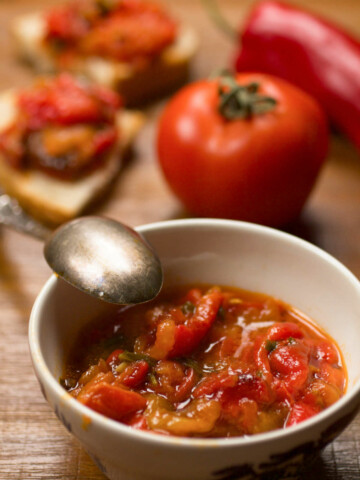
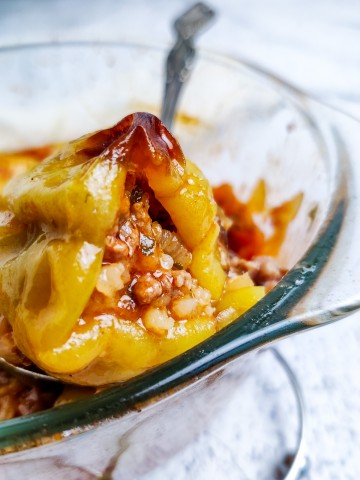

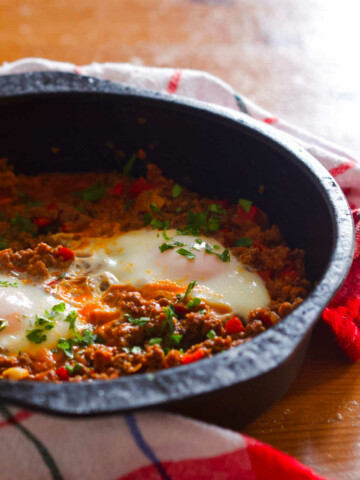
judi says
what is abkers yeast and can i use instnat yeast
Aida says
Yes. Same thing! I'll update the recipe.
CroatianCutie says
Is this the traditional way of making bread in the Balkans? I'm interested in making it, either way. Just curious! I'd love to start making my own bread. Thanks! Love your blog.
Aida says
Hi Croatian Cutie,
This is the regular way of making bread that's pretty similar in most countries. However, here is the link to pogacha, which is more traditional. https://balkanlunchbox.com/pogacha-traditional-balkan-bread/
Thanks for stopping by 🙂
Neir says
Thank you so much for all these recipes you’ve made available! My mom passed away in 2014, before I learned most of her recipes. I’m so grateful to have them available when I miss her cooking!
Aida says
Neir,
So sorry to hear about your mom's passing. Hopefully this can bring some of her flavors back into your kitchen. <3